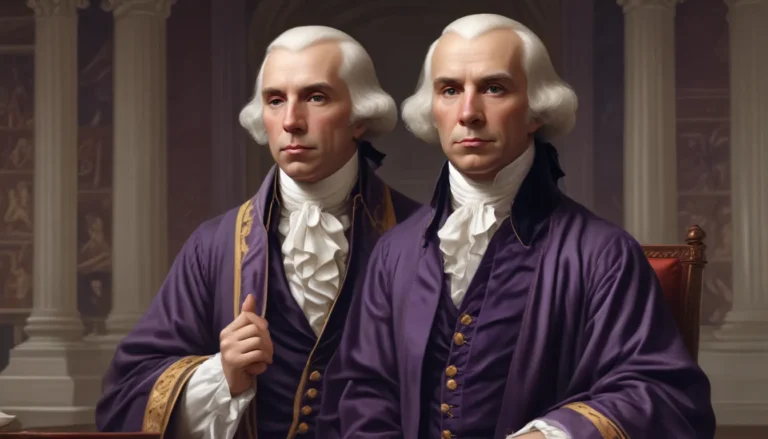The images in our articles may not match the content exactly. They are used to grab your attention, not to show the exact details in the text. The images complement the text but do not replace it.
California’s diverse landscapes are not just a sight to behold; they are also a living testament to the vibrant and resilient Native American tribes that have called this land home for centuries. In this comprehensive guide, we will delve into the rich tapestry of California’s indigenous heritage, uncovering fascinating facts about the traditions, languages, spiritual beliefs, and challenges faced by these diverse communities. Whether you are a history enthusiast, a culture buff, or simply curious about the untold stories of California’s tribes, join us on this enlightening journey as we explore the remarkable world of Native American tribes in the Golden State.
The Uniqueness of California’s Indigenous Tribes
California stands as a beacon of Native American heritage, boasting over a hundred federally recognized tribes that represent a mosaic of cultures, languages, and histories. Before the arrival of European settlers, California was teeming with indigenous communities that thrived in harmony with the diverse ecosystems and abundant resources of the region.
- California is home to more than 100 federally recognized tribes, making it the state with the largest number of distinct tribes in the United States.
- From the coastal Chumash to the mountain-dwelling Hupa, each tribe in California has its own unique traditions and way of life, shaped by the landscapes they inhabit.
The Linguistic Diversity of California Tribes
One of the most intriguing aspects of California’s indigenous heritage is the unparalleled linguistic diversity among its tribes. With over 100 languages spoken, these indigenous languages form a significant part of the world’s linguistic heritage.
- Language families like Hokan and Uto-Aztecan encompass several of the languages spoken by California tribes, showcasing the vast array of linguistic diversity in the region.
- Unfortunately, many of these languages are now considered endangered, with some on the brink of extinction due to the lack of fluent speakers.
Embracing Traditional Lifestyles and Practices
California’s tribes have a long history of adapting to their environments, developing unique practices and skills that sustain their way of life.
- Coastal tribes like the Chumash excelled in fishing and canoe-building, using tomols for ocean travel and trade.
- Interior tribes specialized in intricate basket weaving, creating designs for storage, cooking, and ceremonial purposes.
- Acorn, a staple food for many tribes, was processed using sophisticated techniques to remove its natural bitterness, showcasing the ingenuity and resourcefulness of California’s indigenous peoples.
Exploring the Spiritual Beliefs and Rituals of California’s Tribes
Spirituality played a central role in the lives of California’s indigenous communities, with rituals and beliefs deeply intertwined with the natural world.
- Many tribes believed in a world imbued with spiritual forces, where animals, plants, and natural phenomena held sacred significance.
- Rituals like the White Deerskin Dance of the Hupa and the World Renewal Ceremonies of the Karuk were performed to maintain balance in the world and ensure the well-being of the community.
Navigating the Impact of European Settlement
The arrival of European settlers in California marked a tumultuous period for the indigenous tribes, leading to loss of land, culture, and lives.
- Diseases introduced by Europeans, such as smallpox and measles, ravaged tribal populations, resulting in catastrophic declines for some communities.
- The California Gold Rush and the establishment of missions further disrupted traditional ways of life, displacing and marginalizing many tribes in the process.
Celebrating Resilience and Revival
Despite centuries of adversity, California’s tribes have demonstrated remarkable resilience in preserving their cultures and reclaiming their rights.
- Tribes have undertaken efforts to revitalize endangered languages, establishing language immersion schools and programs to pass on linguistic heritage to future generations.
- Reviving traditional practices like tomol-building and World Renewal Ceremonies, tribes are reclaiming their cultural identity and heritage.
- Legal victories have been pivotal in securing land rights and protecting sacred sites, reflecting the enduring spirit and determination of California’s indigenous peoples.
- Active engagement in environmental conservation projects demonstrates tribes’ commitment to sustainable management of natural resources using traditional ecological knowledge.
- Recognition of Native American Day in September highlights the ongoing efforts to honor and celebrate the rich cultures and histories of California’s tribes.
- Tribes like the Pechanga and Yocha Dehe Wintun Nation have diversified their economies through gaming and agriculture, blending traditional values with modern entrepreneurship.
Preserving and Promoting Cultural Heritage
Preservation of cultural heritage is a paramount concern for California tribes, who are actively engaged in educational initiatives, cultural events, and advocacy efforts.
- Museums like the Autry Museum of the American West and the California Indian Museum and Cultural Center serve as vital institutions for educating the public about the history and cultures of California’s tribes.
- Traditional crafts like basket weaving and pottery are not just preserved but thriving, with artisans gaining international recognition for their work.
- Annual powwows and cultural festivals offer tribes a platform to showcase their heritage, foster intergenerational connections, and promote cultural exchange.
- Advocacy for the protection of sacred sites and landscapes remains a key priority for tribes, who seek policies that respect their spiritual and cultural ties to the land.
- Educational initiatives aim to integrate the history and contributions of California’s tribes into school curricula, fostering a deeper understanding and appreciation among all Californians.
Embracing California’s Indigenous Heritage
California’s Native American tribes epitomize the resilience, creativity, and enduring spirit of indigenous cultures in the face of adversity. As we immerse ourselves in the rich tapestry of facts about California’s tribes, let us carry forward a deeper appreciation for their vibrant traditions and invaluable contributions to the cultural mosaic of America. By honoring and celebrating the diverse heritage of California’s indigenous peoples, we honor the past, present, and future of these remarkable communities.






